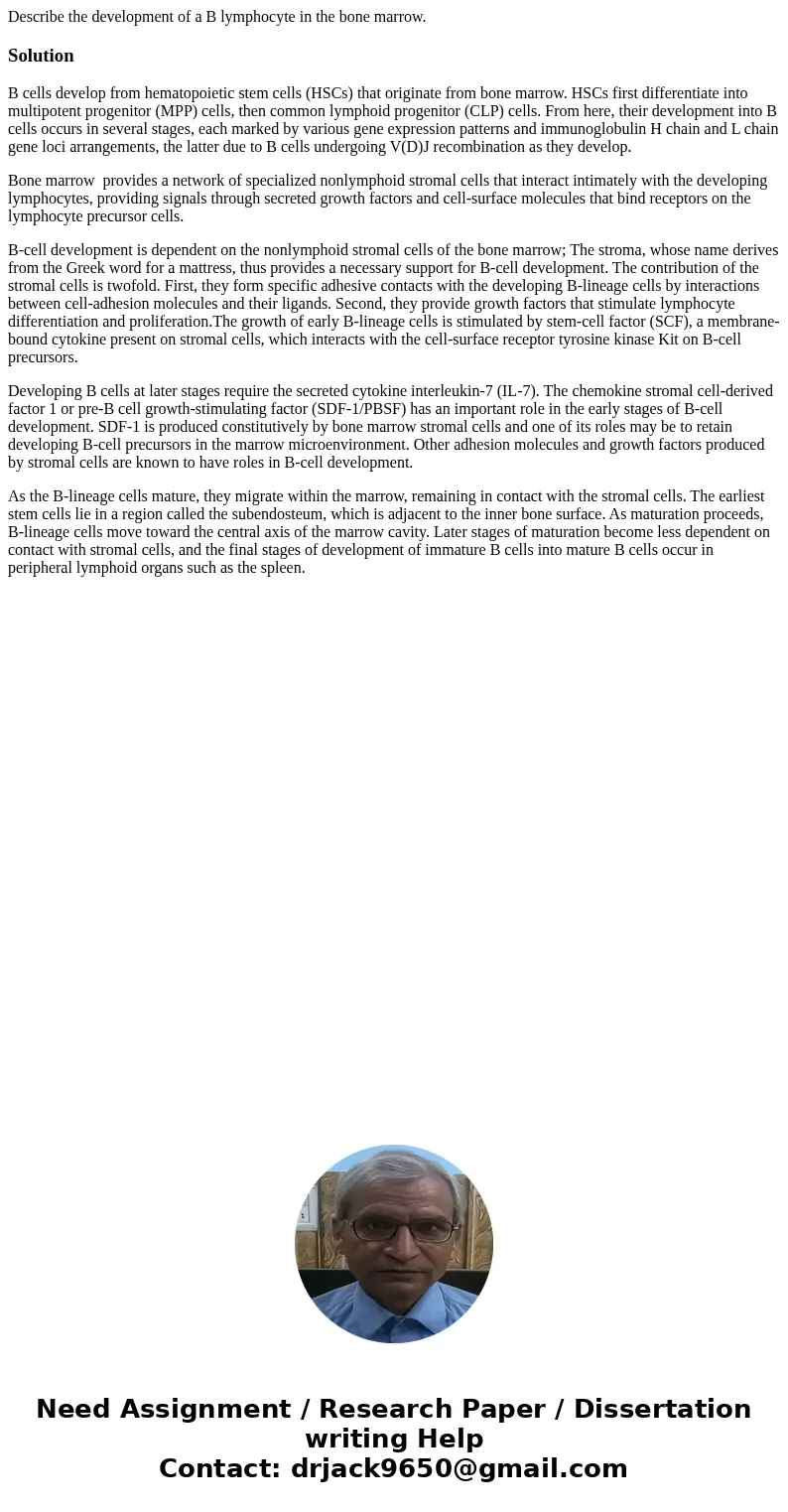Describe the development of a B lymphocyte in the bone marro
Describe the development of a B lymphocyte in the bone marrow.
Solution
B cells develop from hematopoietic stem cells (HSCs) that originate from bone marrow. HSCs first differentiate into multipotent progenitor (MPP) cells, then common lymphoid progenitor (CLP) cells. From here, their development into B cells occurs in several stages, each marked by various gene expression patterns and immunoglobulin H chain and L chain gene loci arrangements, the latter due to B cells undergoing V(D)J recombination as they develop.
Bone marrow provides a network of specialized nonlymphoid stromal cells that interact intimately with the developing lymphocytes, providing signals through secreted growth factors and cell-surface molecules that bind receptors on the lymphocyte precursor cells.
B-cell development is dependent on the nonlymphoid stromal cells of the bone marrow; The stroma, whose name derives from the Greek word for a mattress, thus provides a necessary support for B-cell development. The contribution of the stromal cells is twofold. First, they form specific adhesive contacts with the developing B-lineage cells by interactions between cell-adhesion molecules and their ligands. Second, they provide growth factors that stimulate lymphocyte differentiation and proliferation.The growth of early B-lineage cells is stimulated by stem-cell factor (SCF), a membrane-bound cytokine present on stromal cells, which interacts with the cell-surface receptor tyrosine kinase Kit on B-cell precursors.
Developing B cells at later stages require the secreted cytokine interleukin-7 (IL-7). The chemokine stromal cell-derived factor 1 or pre-B cell growth-stimulating factor (SDF-1/PBSF) has an important role in the early stages of B-cell development. SDF-1 is produced constitutively by bone marrow stromal cells and one of its roles may be to retain developing B-cell precursors in the marrow microenvironment. Other adhesion molecules and growth factors produced by stromal cells are known to have roles in B-cell development.
As the B-lineage cells mature, they migrate within the marrow, remaining in contact with the stromal cells. The earliest stem cells lie in a region called the subendosteum, which is adjacent to the inner bone surface. As maturation proceeds, B-lineage cells move toward the central axis of the marrow cavity. Later stages of maturation become less dependent on contact with stromal cells, and the final stages of development of immature B cells into mature B cells occur in peripheral lymphoid organs such as the spleen.

 Homework Sourse
Homework Sourse